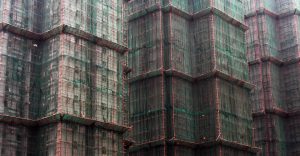
Building on Disappearance: Hong Kong Architecture and Colonial Space
In this reading ‘Building on Disappearance’, Ackbar Abbas exemplifies and critiques the political and economical factors that influence of culture of Hong Kong through space and architecture. He claims that the identity of Hong Kong represented in architecture, has been reduced to anonymity and hyper-density and influences of external powers, weather it be foreign architects, international business buildings, and political colonizers. The historical representation of the city is threatened, and it doesn’t have to take the physical demolition of monumental buildings to see that. The attempts for preservation of cultural places of significance tries to tie in modernity and history but leaves room for mistakes and misrepresentation.
This leaves Hong Kong as a city with an identity crisis, and the label of ‘global city’ is usually painted in a positive light, with the repeated phrase of ‘East meets West’. Through past the bilingual signs, there lies matter of handling power structures and representation. ‘West’ is associated with modernity and prosperity, while ‘east’ is old fashioned, unkept, and needs to be destroyed, replaced, and forgotten. This dynamic is brought up from the the colonialism that Hong Kong have been subjected to for a century by Britain, integrating western ideals and values onto the culture of Hong Kong. And even though colonization era has ceased for about twenty years, the effects and influences of British rule can still be seen today.
Abbas also examines the current preservation efforts of Hong Kong’s past, criticizing for the mishandling, misrepresentation of history despite the physical structures that were made for this very reason; the Hong Kong Cultural Centre is brought up as the example. I personally find this alarming, as history is important and should be handled with care. However, I find that the current handling of cultural history in Hong Kong not very surprising, as this city is depicted as fast-paced and convenience based, focused on business and economic prosperity. As time is money, people can not afford to examine the past, despite its importance.
Pressured by the limited space and human density, constant change and progress is inevitable, and architecture is influenced by these factors. I would argue that the inconsistency of architecture and skylines would be the defining characteristic of Hong Kong architecture and culture. As a city by the harbor, Hong Kong serves as a launching off point for many people, businesses and communities, focused on moving forward and surviving, but never really stay in one place. Even though architecture is more permanent, the lifespan of these buildings are short, serving the people and places at the moment, and flexible to change with the time. If one thing is for certain, bamboo scaffolding, white and green cloth and cranes are consistent among the Hong Kong skyline.
Holly Situ UID 3035613856